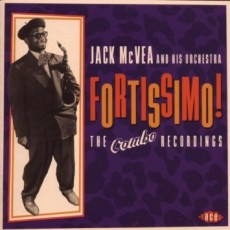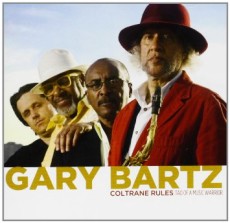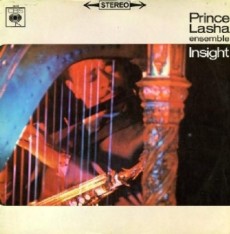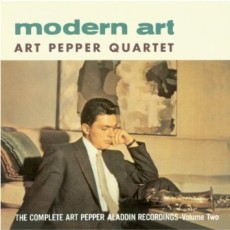
Daily Dose Of Jazz…
Jack McVea was born in Los Angeles, California on November 5, 1914. His first instrument was a banjo, learning from his father Satchel, who was a noted banjoist. After playing jazz in Los Angeles for several years, he joined Lionel Hampton’s orchestra in 1940. From 1944 on he mostly worked as a leader, but impressively performed as a sideman in those years was at the first Jazz at the Philharmonic concert in 1944.
McVea was leader of the Black & White Records studio band and was responsible for coming up with the musical riff for the words Open the Door, Richard and Ralph Bass got him to record it in 1946. It became immensely popular, entering the national charts the following year, and was recorded by many other artists.
From 1966 till his retirement in 1992 he led a group that played Dixieland jazz in New Orleans Square at Disneyland, called The Royal Street Bachelors. When formed, the trio consisted of McVea on clarinet, Herman Mitchell on banjo, and Ernie McLean on guitar and banjo.
In 1945 he played tenor saxophone in a recording session for Slim Gaillard alongside Charlie Parker and Dizzy Gillespie. He is also known for his playing on T-Bone Walker’s Call It Stormy Monday (But Tuesday Is Just As Bad, and has performed and recorded with B. B. King.
Tenor and baritone saxophonist Jack McVea, who also played clarinet in the swing, blues and rhythm and blues genres, passed away on December 27, 2000. He was 86.

Daily Dose Of Jazz…
Gary Bartz was born on September 26, 1940 in Baltimore, Maryland. E graduated from the Baltimore City College High School and Juilliard School and got his break playing saxophone into the music industry in his father’s club with Art Blakey, making his debut recording on Blakey’s 1965 Soul Finger album.
Bartz joined the Charles Mingus Jazz Workshop from 1962-1964 where he worked with Eric Dolphy and McCoy Tyner. This was followed with stints with Abbey Lincoln and Max Roach in the mid-Sixties. By ’68 he was a part of McCoy’s Expression band.
Gary has played with Jackie McLean, and with Miles Davis on his Live-Evil project. He formed the group Ntu Troop, and has combined soul, funk, African music, hard bop and avant-garde jazz. He has recorded more than 40 solo albums and over 200 as a guest artist with the likes of the Rance Allen Group, Gene Ammons, Kenny Burrell, Donald Byrd, Norman Connors, Antonio Hart, Phyllis Hyman, Barney McAll, Alphonse Mouzon, Grachan Moncur III, Rare Silk, Pharoah Sanders and Woody Shaw amongst others.
Post-bop alto saxophonist Gary Bartz who also plays soprano saxophone and clarinet has won a Grammy Award in 2005 for his playing on McCoy Tyner’s Illuminations and currently teaches at the Oberlin Conservatory of Music in Ohio when not touring and recording.

Daily Dose Of Jazz..
William B. Lawsha, better known as Prince Lasha (pronounced “La-shay“), was born on September 10, 1929 in Fort Worth, Texas. He came of age studying and performing alongside fellow I.M. Terrell High School students John Carter, Ornette Coleman, Charles Moffett and Dewey Redman.
Lasha moved to California during the 1950s and by the Sixties he was active in the burgeoning free jazz movement, of which Ornette Coleman was a pioneer. Moving to Europe in 1966 his musical base was in Kensington, London and his album Insight was recorded, featuring local musicians including Bruce Cale, Dave Willis, Jeff Clyne, Rick Laird, Joe Oliver, David Snell, Mike Carr, Stan Tracey, John Mumford and Chris Bateson.
Prince returned to the U.S. in 1967, worked closely with saxophonist Sonny Simmons, recording two albums, The Cry and Firebirds for Contemporary Records. The latter album received five stars and an AMG Album Pick at Allmusic. He also appeared on two recordings with Eric Dolphy, Iron Man and Conversations, and Illumination! with the Elvin Jones/Jimmy Garrison Sextet featuring McCoy Tyner.
In the 1970s, Lasha and Simmons made additional recordings under the name Firebirds. In 2005, he recorded the album The Mystery of Prince Lasha with the Odean Pope Trio. He also recorded with Gene Ammons and Michael White.
Alto saxophonist, flautist and clarinetist Prince Lasha passed away on December 12, 2008 in Oakland, California.

Daily Dose Of Jazz…
Arthur Edward Pepper, Jr. was born on September 1, 1925 in Gardena, California to a mother who was a fourteen year old runaway and a merchant seaman father, both of whom were violent alcoholics. He was sent to live with his paternal grandmother where he exhibited musical interest and talent while still very young. He began playing the clarinet at nine, switching to the alto saxophone by 13 and immediately started jamming on Carnegie Avenue, the Black nightclub district of Los Angeles.
By the age of 17 he began playing professionally with Benny Carter and then became part of the Stan Kenton Orchestra, touring with that band, until he was drafted in 1943. After the war he returned to Los Angeles and joined the Kenton Innovations Orchestra. In the 1950s Pepper was recognized as one of the leading alto saxophonists in jazz, epitomized by his finishing second only to Charlie Parker as Best Alto Saxophonist in the Down Beat magazine Readers Poll of 1952. Along with Chet Baker, Gerry Mulligan and Shelly Manne, he is often associated with the musical movement known as West Coast jazz, more so for geography than playing style.
Art recorded profusely and some of his most famous albums from the 1950s are Art Pepper Meets The Rhythm Section, Art Pepper + Elven-Modern Jazz Classics, Getting’ Together and Smack Up. During this period he also recorded for Aladdin Records – The Early Show, The Late Show, The Complete Surf Ride, and The Way It Was!, which features a session recorded with Warne Marsh.
His career was repeatedly interrupted by several prison stints stemming from his addiction to heroin from the mid-Fifties to the mid-Sixties and during his last incarcerations at San Quentin played in an ensemble with Frank Morgan. Pepper managed to have several memorable and productive comebacks. Remarkably, his substance abuse and legal travails did not affect the quality of his recordings, which maintained a high level of musicianship throughout his career. During the late 1960s he spent time in Synanon, a drug rehabilitation group and began methadone therapy in the mid-1970s.
His last comeback saw him as a member of Buddy Rich’s Big Band from 1968 to 1969. During the mid-1970s and early 1980s he toured Europe and Japan with his own groups and recorded dozens of albums, mostly for Fantasy Records. He authored an autobiography with his third wife Laurie titled Straight Life that focused on the jazz music world and the drug and criminal subcultures of mid-20th century California. Alto saxophonist and clarinetist Art Pepper recorded sixty-four albums as a leader, three with Ceht Baker and another seventeen as a sideman leaving the world a admirable catalogue of music before his death from a stroke due to a brain hemorrhage in Los Angeles, California on June 15, 1982 at the age of 56.

Daily Dose Of Jazz…
Eddie Shu was born Edward Shulman on March18, 1918 in New York City and learned violin and guitar as a child before picking up the saxophone as a teenager. He began his professional career in 1935 in Brooklyn and for the seven years leading up to his service in the U.S. Army, he performed in vaudeville and night clubs as a ventriloquist and played harmonica with the Cappy Barra harmonica Band.
While serving in the Army from 1942 to 1945 with Stan Harper, the two were assigned to a special unit to entertain the troops. He also played in various bans including with Maurice Evans in the Pacific. After the war and through the 1950s Eddie performed with Tadd Dameron, George Shearing, Johnny Bothwell, Buddy Rich, Les Elgart, Lionel Hampton, Charlie Barnet, Chubby Jackson, and Gene Krupa.
By the 1960s Shu moved to Florida, playing locally as well as with the Louis Armstrong All-Stars, Lionel Hampton and Gene Krupa once again. He was a member of the vocal jazz group Rare Silk in 1980. During this period, he performed with this group in and around Boulder, Colorado and also performed a 6-week Department of Defense tour. He would record his final date on the Island Jazz Label “Shu-Swings” With The Joe Delaney Trio, playing tenor and alto saxophones, clarinet, trumpet and also revisit’s his 1954 78 single “Ruby” on chromatic harmonica.
Eddie Shu died on July 4, 1986 in St. Petersburg, Florida while living in Tampa. The swing and jazz multi-instrumentalist also had a high proficiency on the accordion and was a popular comedic ventriloquist.


